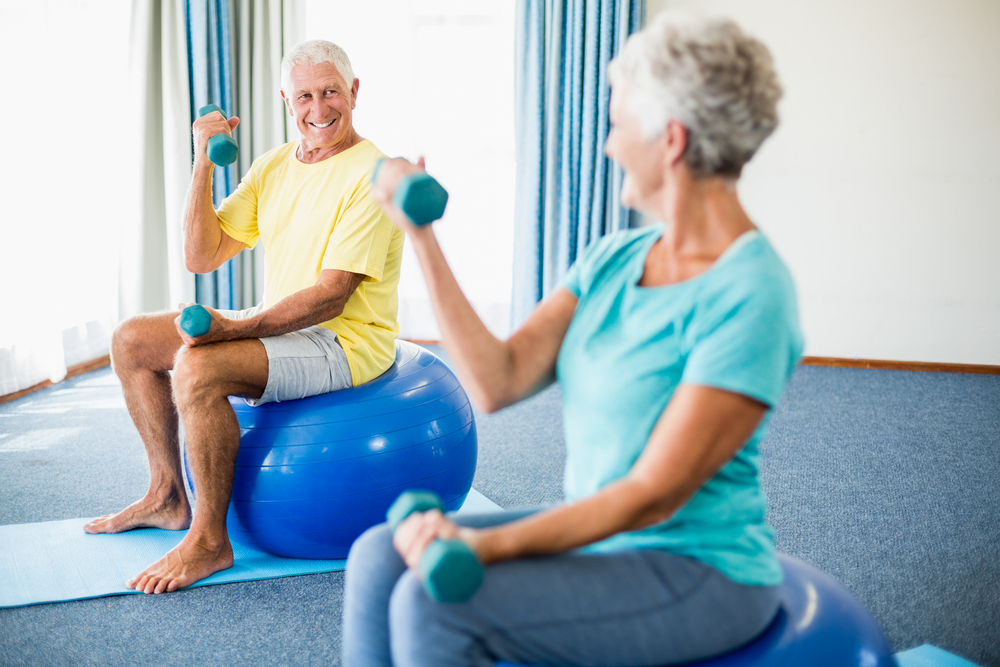Exercises for Seniors to Improve Strength and Mobility
 Some reduction in your strength, mobility, and endurance are to be expected as you age. But the degree of mobility loss can vary widely from one person to another. While some individuals may simply no longer be able to engage in athletic activities, others may struggle with everyday tasks around the house. The factors that determine your level of strength and mobility as you age are many, but performing certain exercises can help. Here are a few you can try to help yourself become more independently mobile.
Some reduction in your strength, mobility, and endurance are to be expected as you age. But the degree of mobility loss can vary widely from one person to another. While some individuals may simply no longer be able to engage in athletic activities, others may struggle with everyday tasks around the house. The factors that determine your level of strength and mobility as you age are many, but performing certain exercises can help. Here are a few you can try to help yourself become more independently mobile.
Head Rotations
While this exercise may seem simple, many seniors struggle with turning their heads while standing without losing their balance. So, if you need to hold onto a wall, rail, or chair back while performing this exercise, that’s perfectly alright. Of course, the goal is to work up to doing this without needing support.
To perform this exercise, stand with your feet hip width apart. Turn your head slowly, looking towards one shoulder, then turn it slowly the other way to look over the other shoulder. Keep your body still as you do this, and repeat for 30 seconds. If you feel dizzy, take a break and try again later.
Foot Taps
Stand in front of a low step, such as the bottom stair of your staircase. If this is too high for you, find something lower; you could even lay a book on the ground in front of you and work your way up to something taller. Hold onto something for support if needed.
Lift one foot up to the height of the step, tap it, then set your foot down. Repeat this on the same side 15 times, then do the same thing on your other leg.
Standing March
If foot taps are too easy, try this one instead. Stand up straight and lift one knee as high as you can without losing your balance; your goal is to lift until your thigh is parallel to the floor, so don’t lift any higher than this. Keep your torso straight and don’t lean while performing the exercise. Pause briefly with one leg at your maximum height, then return it to the ground. Alternate legs, marching 20 times altogether.
Sit to Stand
For many senior, sitting down and rising from a chair without support can be quite challenging. This exercises is perfect for rebuilding (or maintaining) the muscle strength and coordination needed to perform this movement without assistance.
Stand with your back to a sturdy chair that has a firm seat. For example, use a dining chair, and not your sofa or recliner. Slowly and gently lower your hips to the chair until you’re fully seated on the edge of the seat. Then, without swinging your torso or pushing yourself up with your hands, try to rise from the chair. It’s best to push through your heels as you rise to keep your balance. Try to do this 10 times.
If you’re not comfortable or confident trying this exercise alone, ask someone to stand in front of you to offer some assistance. It’s essential to put safety first.
Single Leg Stands
This can be a difficult balance exercise for many, so have some support nearby if you need it. Stand with your feet hid width apart and slowly lift one foot off the floor. You only need to lift it up about an inch. Keep your torso straight as you balance, and avoid leaning onto your standing foot. Try to hold the position for 10 seconds, then lower your foot back to the floor. Repeat on the other side.
Try to increase the amount of time you balance each day, and decrease how often you touch your supporting object while balancing.
Clock Reach
It’s best to do this exercise with a sturdy-backed chair nearby. Stand to one side of the chair, with your hand on the back of it. Imagine yourself standing at the center of a clock. Using the hand that’s not holding the chair, reach your fingertips and your same leg forward to the 12 o’clock position. Move them to the 3 o’clock position, then behind you to the 6 o’clock position. Then, reverse the movements, moving back to 3 o’clock and 12 o’clock before lowering your arm and leg. Repeat this exercise, then switch sides.
Performing these exercises every day can help you to become more independently mobile. However, many senior citizens will still require mobility aids and accessibility features in their homes to remain safe. If you or your loved one needs any of these items, please stop by one of our stores to explore or large inventory of accessibility and mobility items.